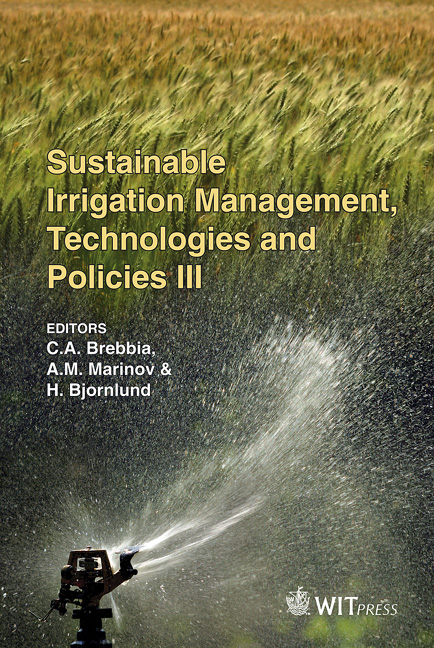Making Large Gravity Irrigation Systems Perform
Price
Free (open access)
Transaction
Volume
134
Pages
12
Page Range
15 - 26
Published
2010
Size
1761 kb
Paper DOI
10.2495/SI100021
Copyright
WIT Press
Author(s)
G. Spencer
Abstract
By 2050 the world’s population will increase by an estimated 50%. Most of the increased food demands will have to come from productivity improvements in existing irrigated agricultural areas. These improvements will need to be achieved with less water and less farm land because of the competition from urbanization, industrialization, the need to provide water for environmental purposes and to respond to climate change impacts. Therefore, the challenge facing us is to make existing irrigation systems more efficient and productive to better utilize the shrinking agricultural land and water resources. In south-eastern Australia, severe water shortages brought about by a prolonged 11 year drought sequence has spurred a lot of innovative thinking about how to use the limited available water more efficiently in irrigation and, at the same time, improving the performance of irrigation systems. A higher level of technological investment in the modernization of large unlined, gravity fed irrigation systems in the south-eastern state of Victoria has resulted in increases in efficiency from about 70% up to about 90% - a remarkable outcome. In Victoria, the water saved is being reallocated equally between urban and industrial users, the environment and to existing farmers to improve their security of supply. The investment required is a mix of both hardware and software involving remotely controlled gates, accurate water measuring devices, Supervisory Control and Data Acquisition (SCADA) and system management software. This investment, combined with modelling and control technologies, has resulted in the delivery of significantly improved services to irrigators in terms of equity, reliability and flexibility, and huge improvements in the management capability and performance of existing large-scale irrigation systems.
Keywords
modernization, SCADA, channel control technology, accurate water measurement, improved performance and efficiency, water resource savings





